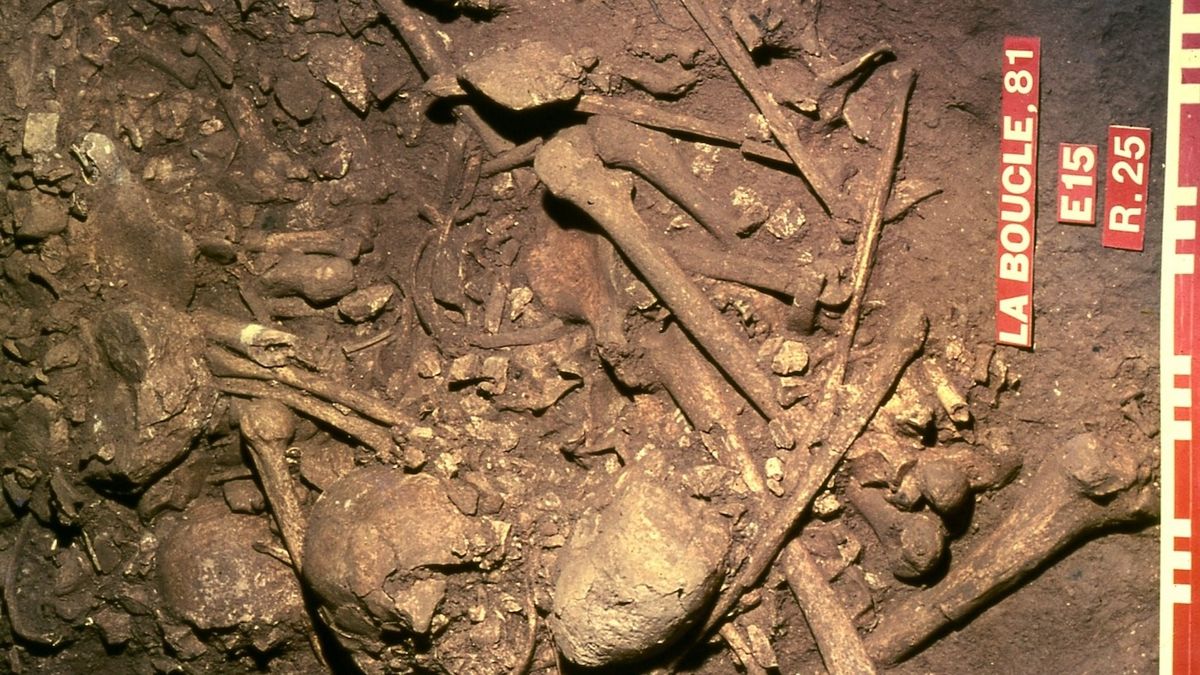Stone Age people buried over a span of 800 years at a mass grave in France mostly belonged to the same male lineage, DNA extracted from skeletons reveals.
The findings emphasize the importance of patrilineality in the social structure of these 5,000-year-old communities, researchers say.
The site — located in Aven de la Boucle, a limestone cave in southern France — contained the remains of roughly 75 individuals, the majority of whom were adults when they died. Scientists analyzed the genomes of 37 of the deceased and radiocarbon dated their bones, which were scattered throughout the site, according to a study published Aug. 28 in the journal Proceedings of the Royal Society B.
Researchers discovered that people were buried there repeatedly between 3600 and 2800 B.C. and that 76% were male. Most of these men belonged to the same paternal line, known as G2, that is passed down between males via the Y chromosome.
This finding suggests that social status may have been passed down paternally and that having this relationship made men more likely than women to be buried at the site.
Related: Dozens of Neolithic burials and ‘sacrificed’ urns and ax discovered in France
“Considering that all [the] men involved in kinship relations carry that same haplogroup (G2), this allowed us to raise the hypothesis of a patrilineal system,” study co-author Mélanie Pruvost, a paleogeneticist at the University of Bordeaux in France, told Live Science in an email. “In other words, the affiliation to a specific male lineage appears to be a preponderant factor to access the collective grave.”
But this doesn’t explain why several women were buried there, too. Pruvost proposed a few possible explanations for this.
“Maybe only a limited number of female individuals were allowed or chose to be included in the collective burial,” Pruvost said. Another possibility is that “bones belonging to female individuals were preferentially removed from the cavity after decomposition occurred and moved elsewhere,” she said.
“As it is often the case in prehistoric groups, women often left their ancestral community to live with their reproductive partner in what we call a patrilocal residence system,” Pruvost added. “We can for example imagine that some female individuals would preferentially return to be buried within their ancestral community.”
However, it’s not clear why this Neolithic group selected this site to bury their dead for so long. It’s possible that the location had significant meaning for them.
“We can imagine that this place represented something important for the community(ies) in relation to its location, its characteristics, or even maybe specific people who were buried there,” Pruvost said. “There might be a thousand different reasons for this choice, and it is highly unlikely that archaeology will ever be able to set those reasons apart.”
In addition to the skeletal remains, researchers found a wealth of artifacts in the cavity, including ceramics and items crafted from animal bones that were possibly “used to secure either shrouds or clothing,” Pruvost said.

